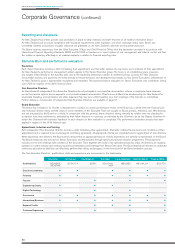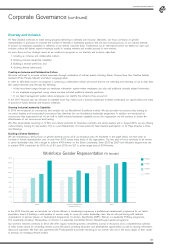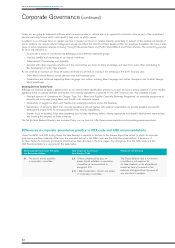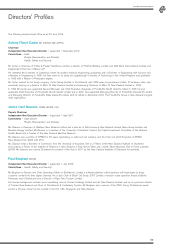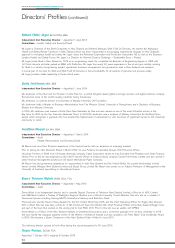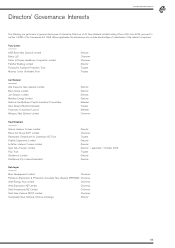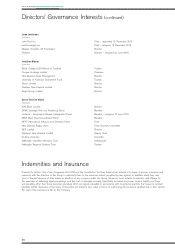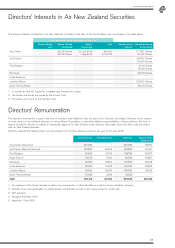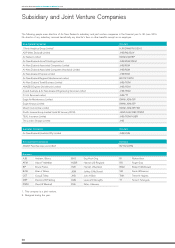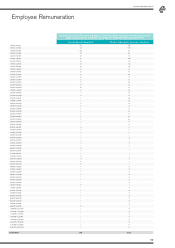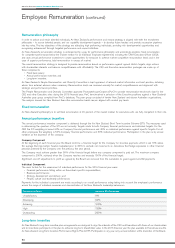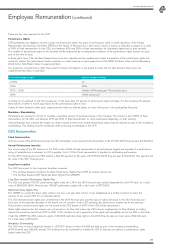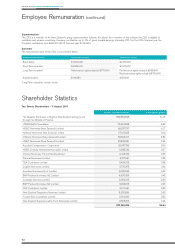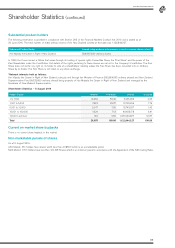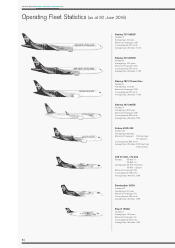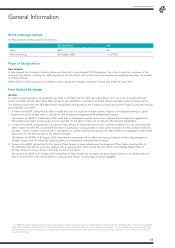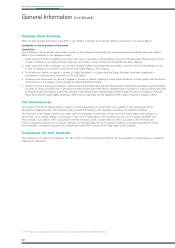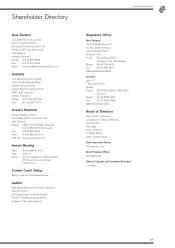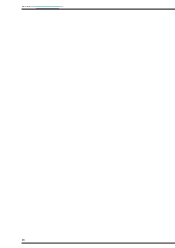Air New Zealand 2016 Annual Report Download - page 62
Download and view the complete annual report
Please find page 62 of the 2016 Air New Zealand annual report below. You can navigate through the pages in the report by either clicking on the pages listed below, or by using the keyword search tool below to find specific information within the annual report.
60
AIR NEW ZEAL AND ANNUAL FINANCIAL RESULTS 2016
Employee Remuneration (continued)
Remuneration philosophy
In order to attract and retain talented individuals, Air New Zealand’s performance and reward strategy is aligned with both the recruitment
philosophy – to source talented people, and our capability development agenda – to develop future leaders and provide succession pipelines
into key roles. The key objectives of the strategy are attracting high performing individuals, providing rich developmental opportunities and
recognising achievement through targeted performance and reward initiatives.
Air New Zealand’s remuneration strategy is underpinned by a pay for performance philosophy and accordingly positions fixed remuneration
for competent performance below the market median for all Individual Employee Agreements including the Chief Executive Officer (CEO),
and uses annual performance incentives to create opportunities for everyone to achieve market competitive remuneration levels and in the
case of superior performance, total remuneration in excess of market.
The overall remuneration strategy is designed to provide remuneration based on performance against agreed stretch targets, align actions
with shareholder interests and balance competitiveness with affordability. The CEO and Executive remuneration packages are made up of
three components:
• Fixed base salary;
• Annual performance incentive; and
• Long-term incentive.
Air New Zealand’s People Remuneration and Diversity Committee is kept appraised of relevant market information and best practice, obtaining
advice from external advisors when necessary. Remuneration levels are reviewed annually for market competitiveness and alignment with
strategic and performance priorities.
The People Remuneration and Diversity Committee approved PricewaterhouseCoopers (PwC) to provide remuneration benchmark data for the
CEO and other Executive roles during the 2016 financial year. PwC benchmarked a selection of the Executive positions against a New Zealand/
Australian peer group compiled from PwC’s database. The peer group consisted of twelve New Zealand and eleven Australian organisations.
The analysis showed Air New Zealand Executive remuneration bands remain aligned with market pay levels.
Fixed remuneration
Air New Zealand’s philosophy is to set fixed remuneration at 90 percent of the market median for executives who are fully competent in their role.
Annual performance incentive
The annual performance incentive component is delivered through the Air New Zealand Short Term Incentive Scheme (STI). The measures used
in determining the quantum of the STI are set annually. Targets relate to both Company financial performance and individual targets. For the
CEO the STI weighting is based 60% on Company financial performance and 40% on individual performance against specific targets. For all
other employees the weighting is 50% Company financial performance and 50% individual performance. Participation in the plan is by annual
invitation at the discretion of the company.
Company Component
At the beginning of each financial year the Board confirms a financial target for the Company for incentive payments which is set 10% above
the average Earnings before Taxation (adjusted prior to 2016 to exclude net movements on derivatives that hedge exposures in other financial
periods) achieved by the Company over the previous five year period.
The Company must achieve greater than 50% of the financial target before any company component is paid out. The maximum company
component is 200%, achieved when the Company reaches and exceeds 150% of the financial target.
Significant one-off adjustments to profit as agreed by the Board are removed from the calculation to guard against windfall payments.
Individual Component
The main factors for the assessment of individual performance for the 2016 financial year were:
• Financial performance falling within an Executive’s specific responsibilities;
• Business performance;
• Strategy development and delivery; and
• People, culture and leadership performance.
Payments for the individual component are made according to an overall performance rating taking into account the employee’s performance
across the range of individual measures and demonstration of Air New Zealand’s leadership behaviours.
Performance Rating Individual STI Percentage
Unsatisfactory 0%
Developing 60%
Achieving 100 %
High 130%
Outstanding 200%
Long-term incentive
Air New Zealand’s long-term incentive plan arrangements are designed to align the interests of the CEO and Executives with those of our shareholders
and to incentivise participants in the plan to enhance long-term shareholder value. In the 2016 financial year the plan available to Executives was the
Air New Zealand Long-Term Incentive Performance Rights Plan (LTIP). Participation in any year is by annual invitation at the discretion of the Board.


